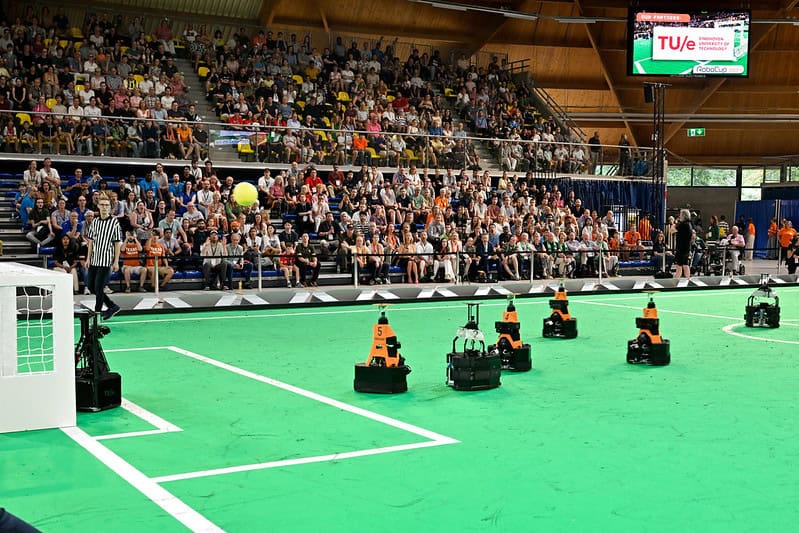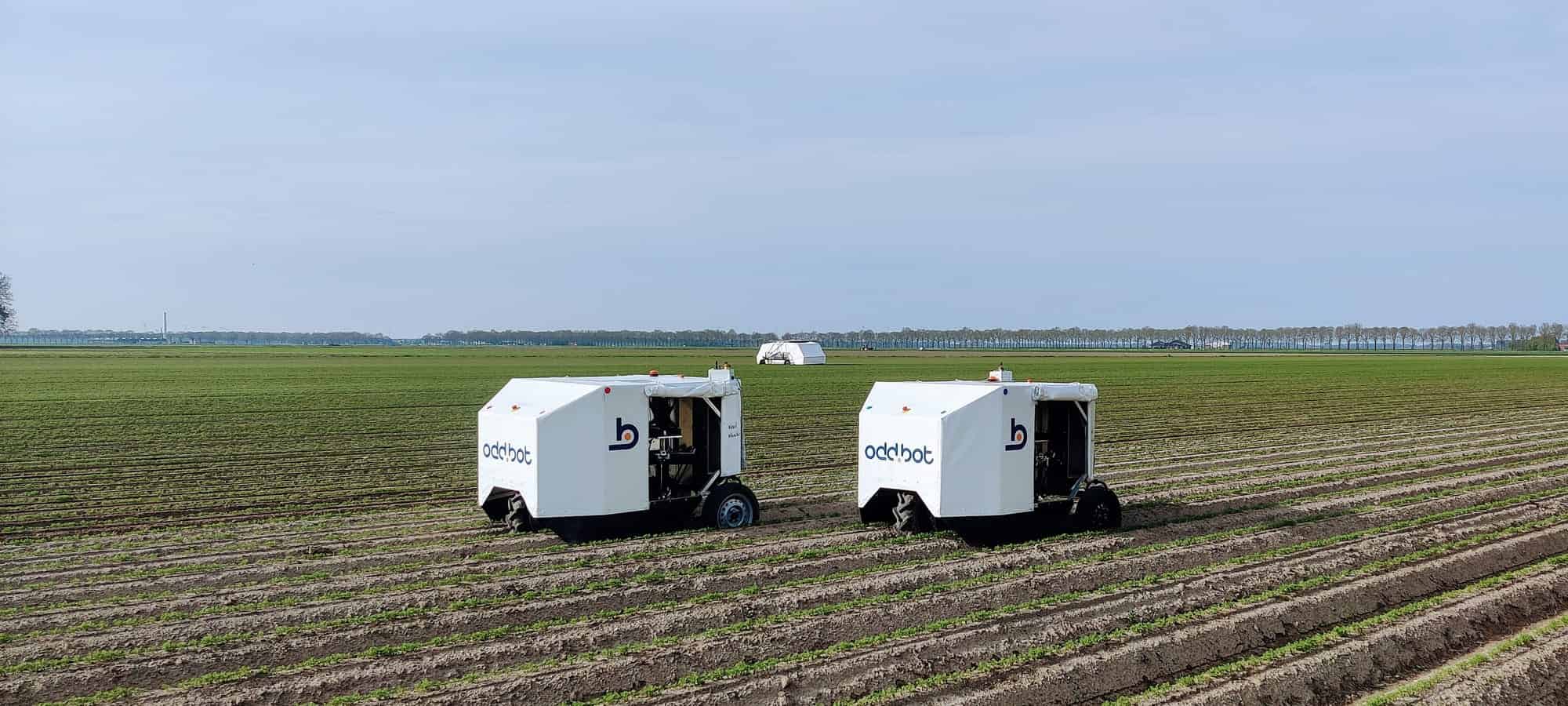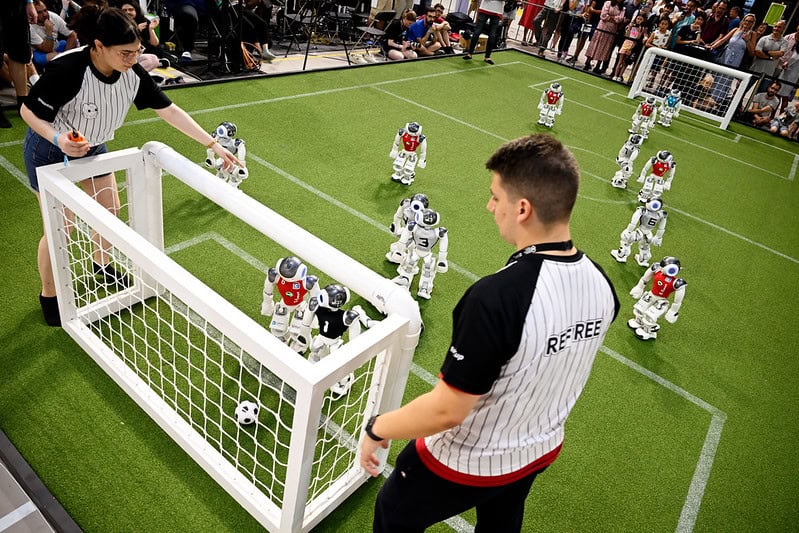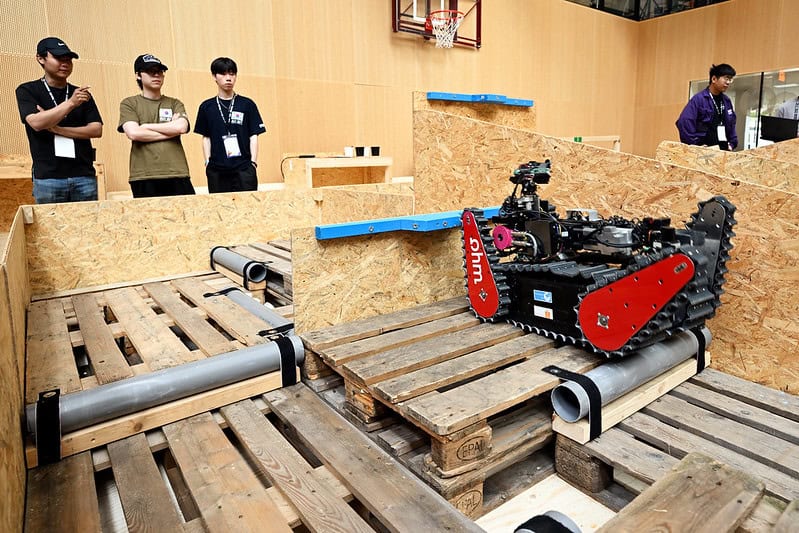
Van Perslucht with a hat trick, Robodinho with its fast pace, and Van Sleutelen with a couple of key saves, so Eindhoven University of Technology’s (TU/e) Tech United is world champion again. The much-awaited final didn’t disappoint the home fans, who cheered for the robot team competing in the middle-size league (MSL). Tech United won 6-1 against the Chinese of BigHeroX, keeping its world title.
For a few days, Eindhoven was the world’s robotics capital. Teams from 40 countries came to the city for the RoboCup, the world cup of robotics. The competitions were the event’s core for four days, complemented by workshops where thousands of visitors could experience this world further.
Why this is important
Automating processes, performing tasks that are hazardous to humans, and offering help: robot technology can do this and more, assisting in countless tasks.
The game
Despite being one player down, one of the robots got damaged before the final. BigHeroX started convincingly, firing two shots, brilliantly saved by Van Sleutelen. Then the Van Persvlucht, Zessi, and Robodinho’s show kicked off, with the former opening the scoresheet. Shortly after, the second goal comes from a set piece, as two BigHeroX’s players get booked. Before the half-time break, there is time for the locals to reach their third goal.
“Back in the day, the robots were wooden boxes clashing with each other. They weren’t able to recognize the nets and the pitch lines. Nowadays, robots have tactics and game plans. Depending on the team, they can also feature artificial intelligence algorithms that learn the opponents’ behavior during the game,” explains Fernando Ribeiro, a robotics professor at the University of Minho, Portugal, and one of the members of the RoboCup Foundation trustees.
During the half-time break, teams can make some changes, which can be quite impactful. They can reduce their speed and aggressiveness if they are booked or opt for a different strategy depending on the result. Nonetheless, the second half still sees the home team controlling the game despite an early goal by BigHeroX.

Robots vs humans
Right after the main final, the Tech United robots, not quite tired after winning the title, challenged the trustees’ team. Humans comfortably won 4-2, despite the efforts and the high press deployed by the robots. “By 2050, the goal is to have a first match between humans and equally capable robots. I’m confident, in ten years, they will be quite close already,” states Ribeiro.
Humanoid robots
The standard platform for autonomous humanoid robots was another of the most entertaining soccer categories. In this league, teams share the same robot model, and the programming behind them makes the difference. “Motion, vision, and behavior are the aspects teams focus the most on; it can take years to fully code effective robots,” explains Patrick Göttsch, from the Hamburg HULKs team, while watching one of the games.
In this category, game plans and tactics are a much more important part of the game. While some teams handle every situation depending on the information they already have, others play on their opponents, learning from their game. The tiny robots tackle – can be suspended from the game – score goals and fall repeatedly.

Home and rescue categories
If robot soccer, in all its categories, is the most entertaining for the audience to watch, many other disciplines occurred during the four days. The @home league, for instance, challenged teams to design autonomous robots to perform tasks in home environments, from manipulating objects to interacting with humans.
The Rescue Robot league featured robots to be deployed in risky situations. Within the league, different challenges existed. In this league, the robots were controlled by one of the team members, who could see on a screen the images captured by the cameras on the rovers. In this category, the most stressed aspects are the durability and the power of each device, as well as the capability to perform tasks in emergency situations.
In one of the tracks, the robots equipped with crawlers had to go through steep tracks, gravel, and sand circuits. In addition, the small rovers also featured mechanical arms to open and close valves and push buttons. Judges gave their assessment depending on how the robot would take on the circuit and what tasks it performed. Despite being maneuvered, team members still assisted the robot, repositioning it when a reset was requested, for instance.

A donut-throwing robot
The event featured different pavilions—and while moving across them, visitors stumbled upon a robot writing on the pavement—where the competitions took place, and exhibitors had a chance to showcase robot technology. Companies working in the robotic domain had several stands, but local robotics teams took part in other competitions.
At one booth, a robot intakes and throws donuts to the visitors. It is the creation of Team Rembrandts, Coda. The nonprofit organization takes part in the international FIRST Robotics Competition yearly. “Each year, we are presented with a new challenge, and in six weeks, we develop a robot to compete in that,” explains Casper Stegers, one of the team members attending the booth. Next February will be no different.
As teams pack their stuff and winners celebrate, the 2025 RoboCup edition is around the corner. This time, Brazil will be the host country.

